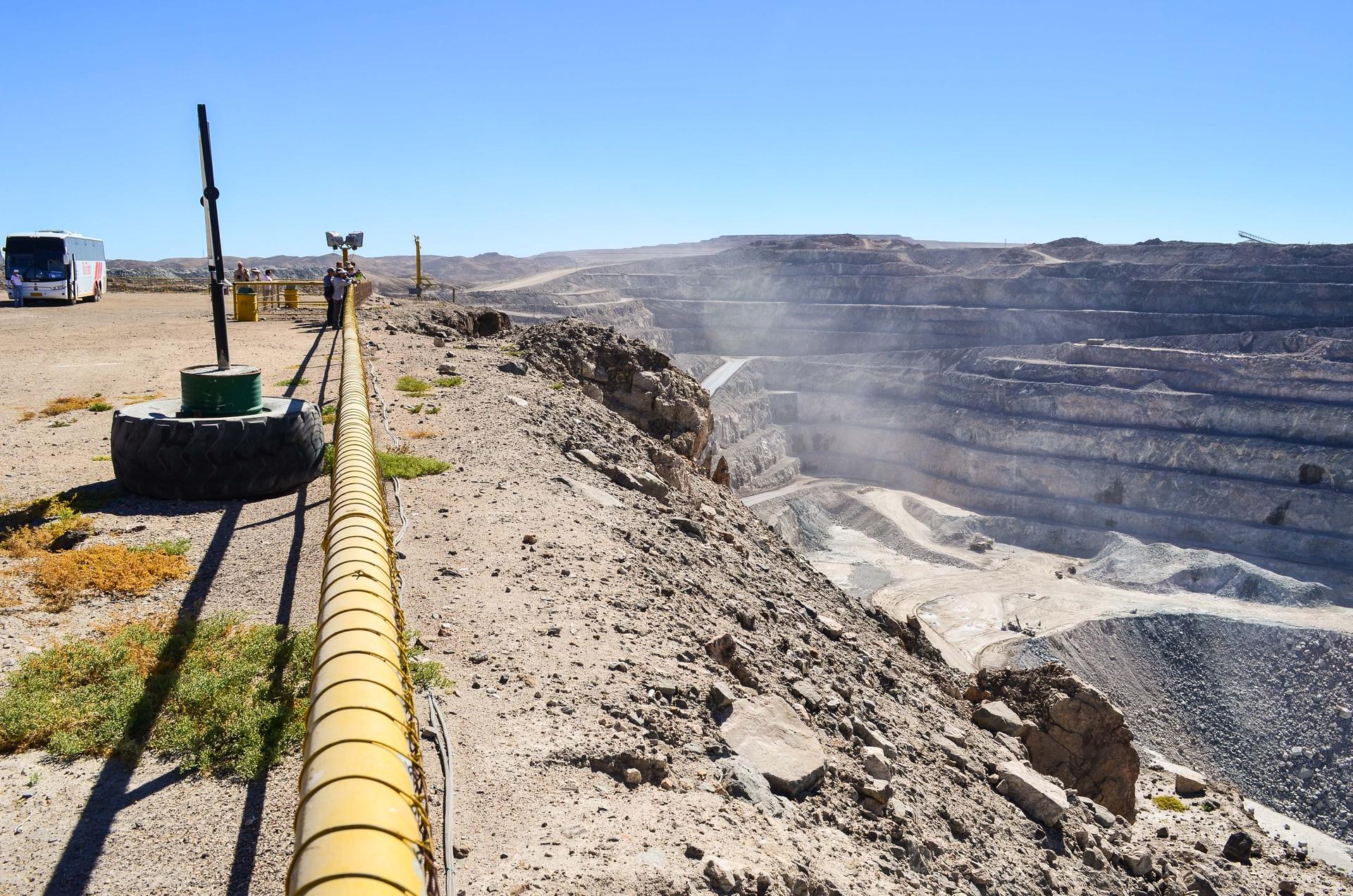Commodities are crashing, with one exception
The open pit of Nambia's Rio Tinto Rössing uranium mine.
Nickel, coffee, gold, sugar, silver and oil — all commodities on a downward slope.
But not uranium.
Despite general uncertainty in commodities markets about Chinese markets and rickety tech stocks, uranium is up 28 percent in the last year.
It’s not the demand for carbon-free nuclear energy in Asia and the US that’s driving the surge.
“There’s some herd behavior," says Matthew Bunn, a professor of public policy at Harvard's Kennedy School of Government.
Bunn, a former adviser to the White House’s Office of Science and Technology Policy, says that uranium prices fell after the 2011 Fukushima Daiichi nuclear disaster in Japan — an event that took several nuclear reactors offline. Fast-forward to 2015, several nuclear reactors are up and running in China, and some reactors in Japan might soon be turned back on, something that’s been driving uranium prices up.
“It will go up and down, but over the long-term, the uranium price is not enough to make a big difference in the cost of nuclear electricity,” Bunn says. “That’s a good thing — it means that countries don’t need to separate out the plutonium that reactors make in their spent fuel. If they do that, which is much more expensive than just mining for more uranium, then it separates it out in a form that is also usable for nuclear weapons.”
The price of this commodity is not what’s holding back a shift from carbon energy to nuclear power, Bunn says.
“The real issue on nuclear energy with respect to cost is the cost of building the plants themselves —that drives about 80 to 85 percent of the cost of nuclear power,” he says. “Right now, the plants remain expensive and their prices don’t seem to be coming down. There are a number of new ideas that people are pursuing that might reduce the price, but in the past new ideas have not succeeded.”
That might soon change. Bunn says that China is building nuclear reactors faster than any other nation in the world, in addition to making the world’s largest investments in new types of nuclear reactors.
“They’re looking at, for example, high temperature gas reactors with graphite as part of the material that controls the flow of neutrons within the reactor,” he says. “There are a lot of new ideas that the Chinese are investing in. Today, the United States, as has always been true, has the world’s largest number of nuclear power reactors. But that will stop being true in another decade or two as China surpasses the number of nuclear reactors in the United States.”
But Chernobyl, Three Mile Island, and Fukushima show that nuclear technology is not always safe.
“A big accident in China, or elsewhere, would be almost a death knell for nuclear growing enough to be a big part of the answer to climate change,” Bunn says. “One of my concerns about the incredible pace at which China is building reactors is whether their safety culture at the plants and the strength of their regulators will be able to keep up with this huge expansion.”
This story first aired as an interview on PRI's The Takeaway, a public radio program that invites you to be part of the American conversation.
We want to hear your feedback so we can keep improving our website, theworld.org. Please fill out this quick survey and let us know your thoughts (your answers will be anonymous). Thanks for your time!
